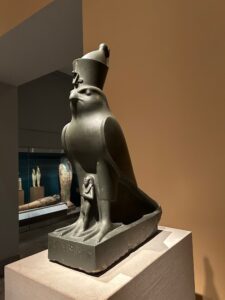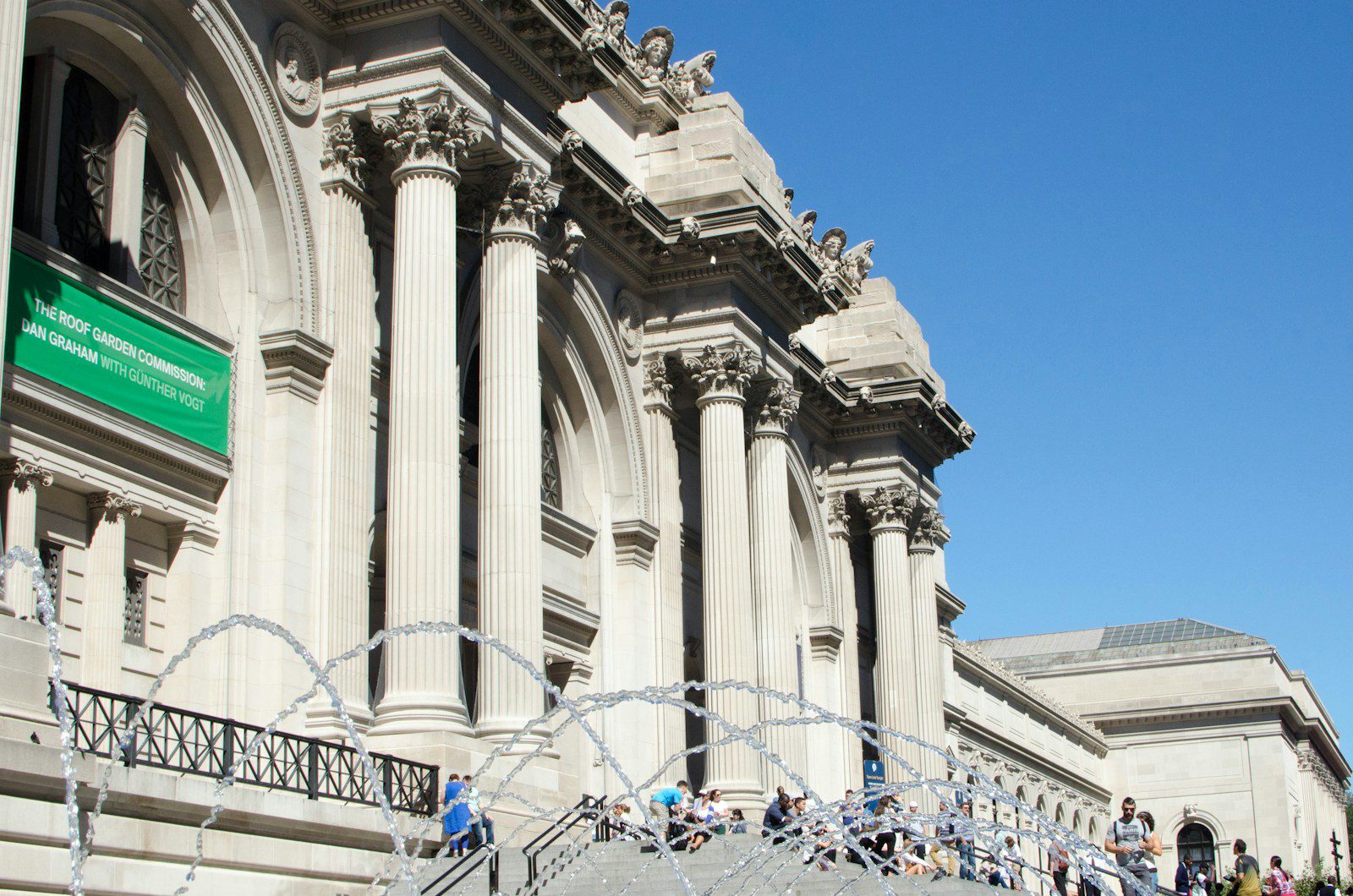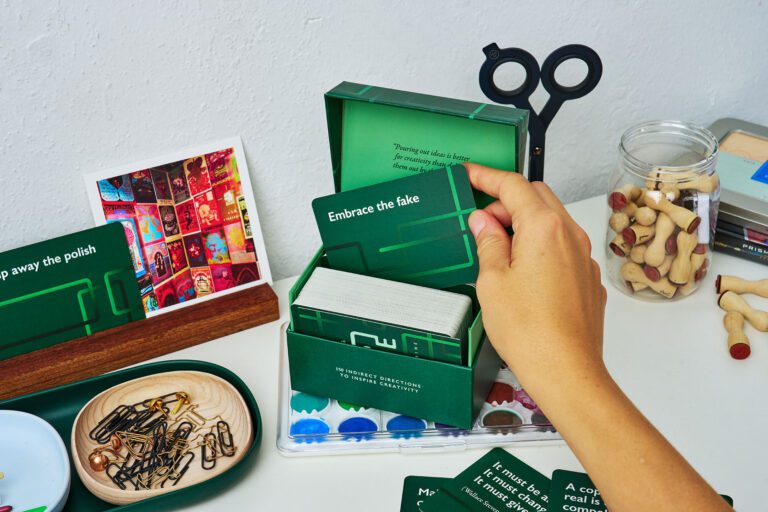For more than four years, I’ve been visiting the Metropolitan Museum every day. (I skip when it’s closed or I’m traveling.)
I started this practice for my book Life in Five Senses. I hoped this daily visit would help me to learn more about my five senses and myself, and how an experience changes with familiarity.
I’d planned to make daily Met visits for one year, but I love going so much that I can’t imagine ever stopping.
And to me, it’s important to go every day. It’s so different to do something every day rather than some days or even most days. As Andy Warhol observed, “Either once only, or every day. If you do something once it’s exciting, and if you do it every day it’s exciting.”
I’ve gained so much from the daily visits, and on a recent visit, I was reminded, yet again, of a vital and transcendent truth.
The days are long, but the years are short. Gather ye rosebuds while ye may. Nothing gold can stay.
Nature’s first green is gold,
Her hardest hue to hold.
Her early leaf’s a flower;
But only so an hour.
Then leaf subsides to leaf.
So Eden sank to grief,
So dawn goes down to day.
Nothing gold can stay. —Robert Frost
I’ve learned to appreciate each beautiful object in the Met, every time I visit—and not to assume that it will be there tomorrow.
It’s funny: Before I went to the Met every day, I expected that the Met would seem like a bulwark against time. So many treasures preserved and safe in their cases; each masterpiece standing in the same place, every time I looked for it.
For someone like me, who loves familiarity, routine, and re-reading, re-watching, and re-looking, this constancy was immensely appealing.
But that’s not what I’ve found.
The Met changes all the time.
Of course, special exhibitions come and go, but I assumed that the permanent collection was, well, more or less permanent.
At first, when I noticed changes, I thought my memory was playing tricks. Hadn’t the bullfighter painting been placed on a different wall? Where was that beautiful ceramic piece? One of my favorite galleries is American Wing Gallery 771—but wasn’t the display of portraits slightly different?
Slowly, I started to realize how much artwork slides around or disappears at the Met.
Certain collections—such as Chinese art, Japanese art, contemporary art—rotate very often. There was a hanging scroll of a carp that I loved, and visited many times, and then—gone.
Also, entire sections vanish without warning. (Well, probably I miss the warnings.) One day, I walked in, and the Rockefeller Wing, which I love, was closed for renovation—for years. This was especially jarring, because it held an Oracle Figure (kafigeledjo) that I viewed on almost every visit. Now that piece is out of sight—perhaps forever, if it doesn’t go back on display at the re-opening.
The same thing happened with the Ancient Near Eastern and Cypriot Art Galleries. One day, I turned a corner and—poof. Closed. Ditto, the European Paintings 1300-1800 Galleries.
Then one day, just as I was thinking wistfully about how much I wanted to visit Portrait of a Carthusian, to look at the “fly” sitting on the painted frame, I passed by the top of the Great Hall Steps and saw that the European Paintings were on view again.
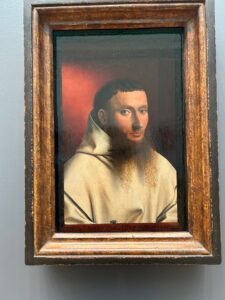
I raced through the galleries to get a sense of what had changed. So much. Paintings hung in different rooms, in different contexts, and with better light. The El Grecos had moved upstairs from the Robert Lehman collection. The Vermeers were here, too.
But would I still be able to see my favorites? I hurried from one room to another. With relief, I spotted Ancient Rome and Modern Rome, The Fortune-Teller, Hermann von Wedigh III, and The Penitence of Saint Jerome Triptych (I like the way a demon tries to catch Saint Anthony the Hermit’s attention by pulling on his book, like a little kid).
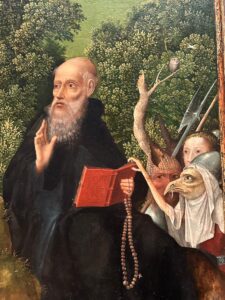
Because I’d written about some artworks in Life in Five Senses, I felt as though these were “mine” in some way, so I was relieved to see The Penitent Magdalen and The Harvesters. And Portrait of a Woman with a Man at a Casement, which always made me laugh.
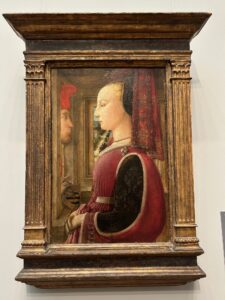
I was thrilled to see that a series of Hubert Robert paintings had been moved from the first floor; my favorite is The Bathing Pool, and it’s much easier to examine it closely in this new spot.
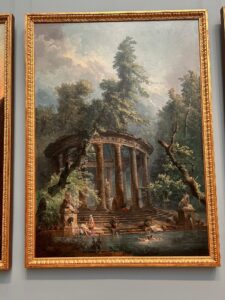
There were also many unfamiliar paintings, and it was exciting to have so much to see and explore. But it made me sad, too. I’d loved these rooms the way they were, and now I could never return to that previous configuration.
Each time I go to the Met, I think about how extraordinarily fortunate I am: to live within walking distance to the Met; to have the time, health, and freedom to visit; to be the beneficiary of so many people’s time, energy, money, learning, and genius; and to be in a place full of people from all over the world, who are enjoying beauty together in peaceful companionship. I never take the Met for granted.
And I no longer take any individual artwork for granted, either.
I never hurry past my beloved God Horus Protecting King Nectanebo II without stopping to look. One day, it may disappear—and even if something beautiful takes its place, nothing can replace those pure, stern lines.
Nothing gold can stay.
